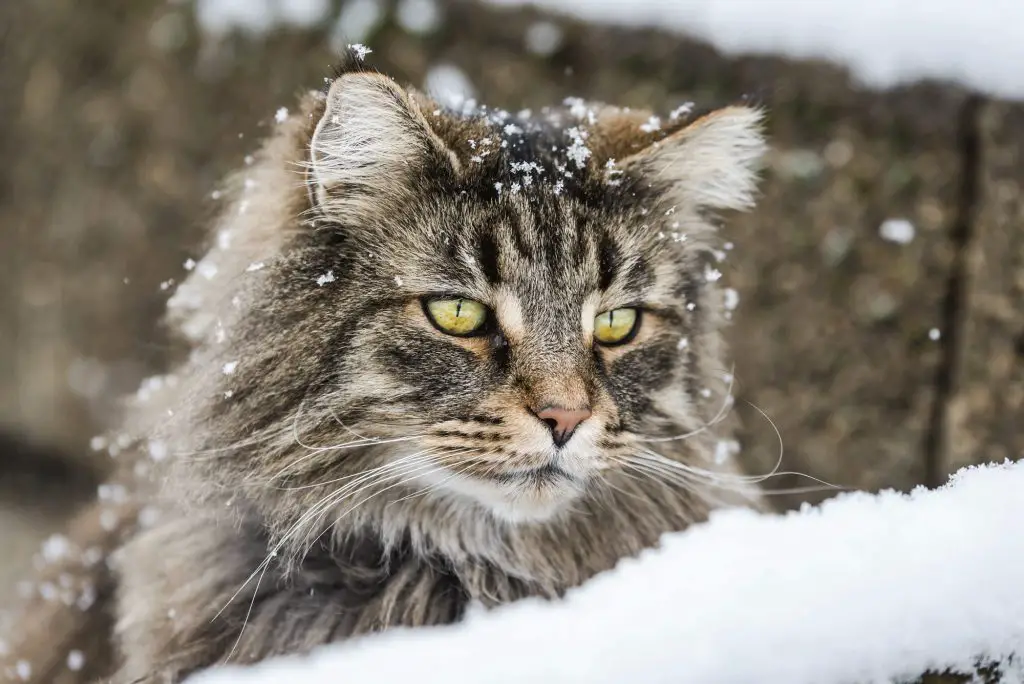As the breed’s name suggests, the Norwegian Forest Cat is a very old breed from Norway, existing as far back as 2000 years ago and appearing in many myths and tales in that region. The cat’s nickname “skogkatt” literally means “forest cat”. It was likely that they were ship cats for vikings, eliminating unwanted mice and rats on their ships.
No one really knows where Norwegian Forest Cats came from before they arrived in Norway, but it’s believed that they might be descendants of Turkish longhaired cats, brought back from the Byzantium Empire by Nordic warriors.
Whatever the case may be, Norwegians Forest Cats were likely not a product of targeted breeding efforts, but instead naturally evolved and adapted to the harsh northern winters of Scandinavia, developing a long, warm coat and thick, muscular bodies.
The breed was nearly lost, though, when Norwegians began keeping more domestic shorthair cats in their homes. The Norwegian Forest Cat would cross-breed with these cats, creating hybrid kittens that lost many of the genetic traits that distinguish the Norwegian Forest Cat. The cross-breeding was so severe, in fact, that the Norwegian Forest Cat almost became extinct at one point.
Great efforts were made in the last several hundred years by Norwegians to preserve the breed, and they were ultimately successful thanks to efforts by Carl-Frederik Nordane in the 1900s to get the breed recognized in Europe. King Olaf V made the Norwegian Forest Cat the official cat of Norway in the 1950s and it finally became a popular and recognized breed all over Europe.
The Norwegian Forest Cat was late in coming to the United States, only arriving for the first time in 1979 and becoming officially recognized as a show cat by the CFA in 1993.
Although the Norwegian Forest Cat is now an official maintained breed all over the world, the nostalgia behind the skogkatt remains. Even now in the cold forests of Norway you’ll find some wild Norwegian Forest Cats, a mystical relic of a beloved national cat.














